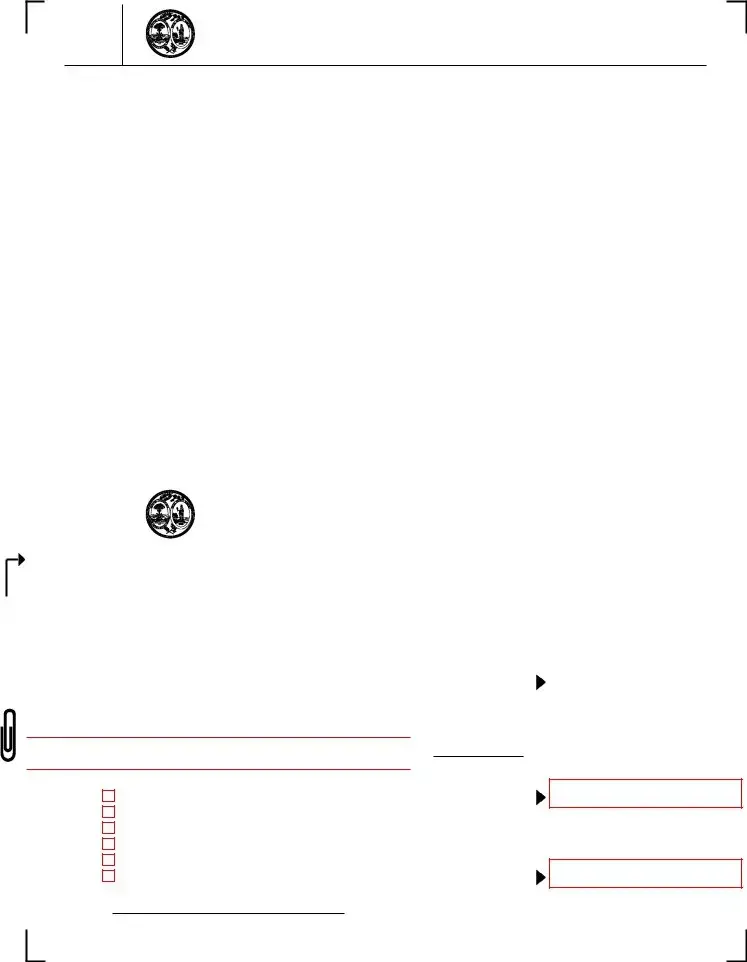The Form 1040-ES, used by individuals to calculate and pay estimated quarterly taxes, mirrors the SC1120-T's functionality for corporations, focusing on taxes anticipated to be due within the current tax year. Both forms serve as tools for taxpayers to comply with the pay-as-you-go tax system of the United States, helping avoid underpayment penalties by estimating the tax liability ahead of the final tax return submission.
Form 7004, Request for Automatic Extension of Time to File Certain Business Income Tax, Information, and Other Returns, shares a fundamental goal with the SC1122-T: providing taxpayers more time to file their tax returns. However, Form 7004 is applicable to a broader range of entities, including corporations, partnerships, and certain trusts, offering a parallel at the federal level to the conditional extension mechanism of the SC1120-T.
The SC1040, South Carolina Individual Income Tax Return, although tailored for individual filers rather than corporations, engages with similar principles of tax computation and payment on income. Just as the SC1120-T considers corporate income tax and license fees, the SC1040 assesses income tax due from individuals, reflecting the scale of taxation from individual to corporate entities within South Carolina's tax system.
Another parallel document is the UBT-ES, Estimated Unincorporated Business Tax Payment Voucher for New York City. This form is designed for businesses, rather than corporations, to pay their estimated taxes quarterly. Like the SC1120-T, it underscores the requirement across jurisdictions for business entities to report and pay taxes in advance based on estimated earnings.
The Form 1120, U.S. Corporation Income Tax Return, operates on a national scale, similar to the SC1120-T's state-level function, requiring corporations to report their income, gains, losses, deductions, and credits to the Internal Revenue Service (IRS). Both forms determine the corporation's tax liability, although the SC1120-T is distinct in its tentative nature and its specific application to South Carolina entities.
Form 8832, Entity Classification Election, while not a tax return, influences tax obligations by allowing an entity to choose how it will be taxed (as a corporation, partnership, or disregarded entity). This choice directly affects the filing requirements, including whether an entity must file the SC1120-T, showcasing the interconnectedness of entity classification and tax liability.
The TXP-01, or Texas Franchise Tax Preliminary Report, is similarly used by businesses in Texas to provide a preliminary assessment of their due franchise tax. Like the SC1120-T, it caters to the need for businesses to comply with local tax obligations on a provisional basis, emphasizing the widespread practice of estimated tax payments across states.
The Form 1065, U.S. Return of Partnership Income, while designed for partnerships, encounters parallel grounds with the SC1120-T in the context of reporting income and deductions to calculate tax liability. Although it caters to a different type of entity, the necessity to report and potentially pay estimated tax aligns with the essence of preliminary tax compliance seen in the SC1120-T.
Form 945, Annual Return of Withheld Federal Income Tax, addresses the reporting of non-payroll income tax withheld, incorporating a sense of preemptive financial accountability similar to that of the SC1120-T. Both forms play a crucial role in the respective realms of income and corporate taxation by ensuring proper tax collection and reporting ahead of annual returns.
Lastly, the California Form 100-ES, Corporation Estimated Tax, directly parallels the SC1120-T, as both are designed for corporations to estimate and pay taxes ahead of filing their comprehensive tax returns. These estimated tax forms underscore the proactive financial planning and compliance efforts required from corporations within different state jurisdictions.


 CHECK IF:
CHECK IF: